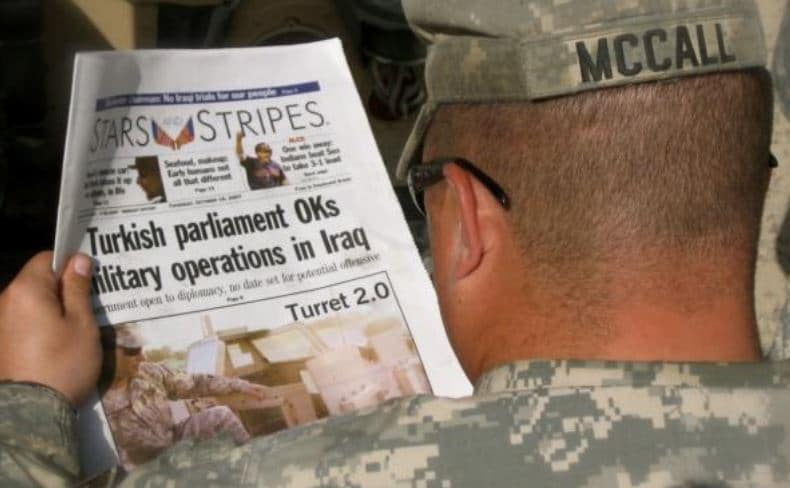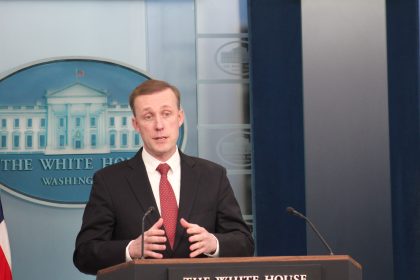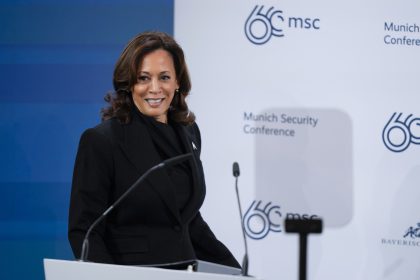Pentagon Proposal to Defund Stars and Stripes Sparks Uproar

WASHINGTON – A Pentagon proposal to cut funding for Stars and Stripes is causing an uproar among media organizations and reporters covering the Defense Department who contend the independent newspaper remains a vital source of information for military personnel stationed overseas.
Stars and Stripes was first printed by Union soldiers about seven months after the start of the Civil War. It’s said to have gotten its start on Nov. 9, 1861, after soldiers from a cluster of Illinois regiments set up camp in Bloomfield, Missouri.
Finding the local newspaper’s office empty, they decided to print a newspaper themselves, chronicling their activities on the battlefield.
At its peak, in World War II, the newspaper printed dozens of editions in several operating theaters.
Among its notable staffers over the years were New Yorker magazine founder Harold Ross and several of his early writers; Andy Rooney and Steve Kroft, both later of CBS-Television’s “60 Minutes”; songwriter and author Shel Silverstein; and Louis Rukeyser, who later hosted public television’s “Wall Street Week.”
Most of the funding for Stars and Stripes comes from sales, subscriptions and advertising, but about 35% of the newspaper’s funding — or $8.7 million annually in operations and maintenance funds and about $6.9 million in contingency operations funds — comes from the Pentagon.
The Pentagon proposed slashing that funding after a defense-wide review, ordered by Defense Secretary Mark Esper, sought funding that could be moved from non-military applications into war fighting areas.
This and other proposed cuts are intended to eliminate low-priority programs to make up for the lack of an increase in this year’s flat $705 billion budget plan.
Acting Defense Department Comptroller Elaine McCusker confirmed the proposed Stars and Stripes funding cut after being asked about it by Reuter’s Phil Stewart during a briefing last week on the Pentagon’s FY 2021 budget request.
“We have essentially decided that, you know, kind of coming into the modern age that newspaper is probably not the best way that we communicate any longer,” McCusker said.
Pentagon officials first informed Stars and Stripes’ publisher, Max Lederer, of the proposed budget cuts to the news organization the morning of the briefing, after The Wall Street Journal published a story identifying the planned funding reduction, citing draft budget documents.
The announcement drew an immediate push-back from the paper’s ombudsman, Ernie Gates, who took to Twitter to say, “Stars and Stripes’ mission is not to communicate the DOD or command message, but to be an independent, First Amendment publication that serves the troops — especially deployed troops.”
“So her [McCusker’s] ‘we communicate’ misses the mission,” Gates said.
Also coming to the defense of the newspaper was Patricia Gallagher Newberry, national president of the Society of Professional Journalists.
“Stars and Stripes keeps the troops – especially those who are deployed – informed. It is an independent, non-partisan voice on which so many troops depend,” Newberry said. “To cut its budget would be doing a huge disservice to the men and women who serve our country.”
“Contrary to what a Pentagon spokesperson has said, there is still a place for newspapers in this modern age,” she continued. “This is especially the case for troops who are deployed to areas where internet access is not available or is prohibited.
“Its ability to inform troops about issues important to them must not be hindered,” Newberry concluded.
The journalism organization has called on Defense Secretary Esper to reconsider the budget cuts and the effects they will have on deployed troops in receiving news from home.
Others, like CNN Pentagon correspondent Barbara Starr, noted that while the paper is available online, its print editions are still a necessity overseas, where increasingly, troops are not able to use mobile devices for security reasons.
“Pentagon says funding for Stars and Stripes will be cut because it decided that ‘coming into the modern age, that newspapers (are) probably not the best way that we communicate any longer,'” responded Reuters’ Idrees Ali. “In many cases, Stars and Stripes is the only publication available to troops at bases.”
Still more simply expressed anger about the decision.
“DOD waging war on its own media — cuts $$ for the military’s independent newspaper, Stars and Stripes, first published in 1861,” Associated Press Pentagon reporter Lolita Baldo tweeted after the budget briefing.
Despite the hue and cry, Espers defended the Pentagon’s effort to strip Stars and Stripes of its federal funding, telling reporters in Brussels that the independent news organization is not a priority.
“We trimmed the support for Stars and Stripes because we need to invest that money, as we did with many, many other programs, into higher-priority issues,” he said.
Separately, Marine Lt. Col. Chris Logan, a spokesman for Deputy Defense Secretary David Norquist, said Stars and Stripes’ “hard work and dedication in reporting on issues that matter the most to the military community continues to be of value.”
“However, as we look forward to the current budget proposal and beyond, the DOD must prioritize spending to support our warfighters in the most critical areas of need. Therefore, the department has made the difficult decision that, beginning in fiscal year 2021, it will no longer provide appropriated funds to Stars and Stripes,” Logan said.
In an email to his employees, Stars and Stripes’ Lederer said, “The preparation for the defense budget submission to the president’s budget takes considerable time. However, I was not informed prior to this morning that there was a change in Stars and Stripes funding being considered or would be proposed.
“Consequently, I and the Stripes leadership have not had an opportunity to study and plan for this change. We are now beginning that discussion and evaluating options, including ways to continue operations in some form,” he said.






















